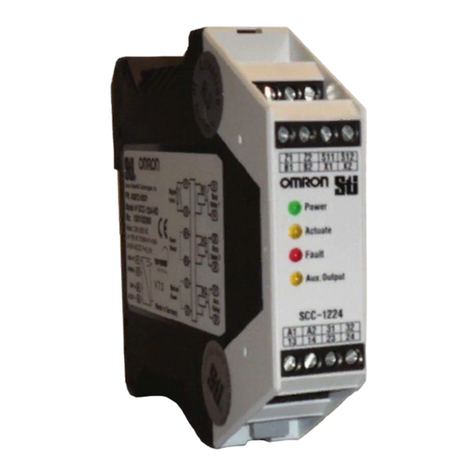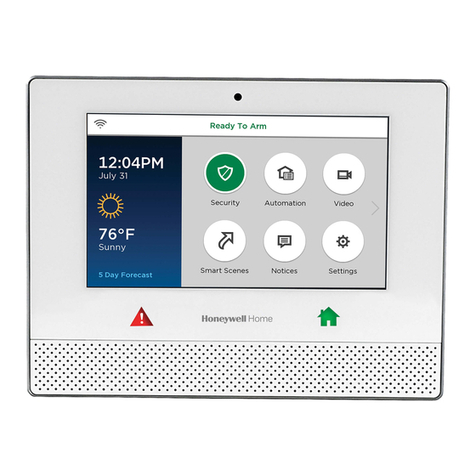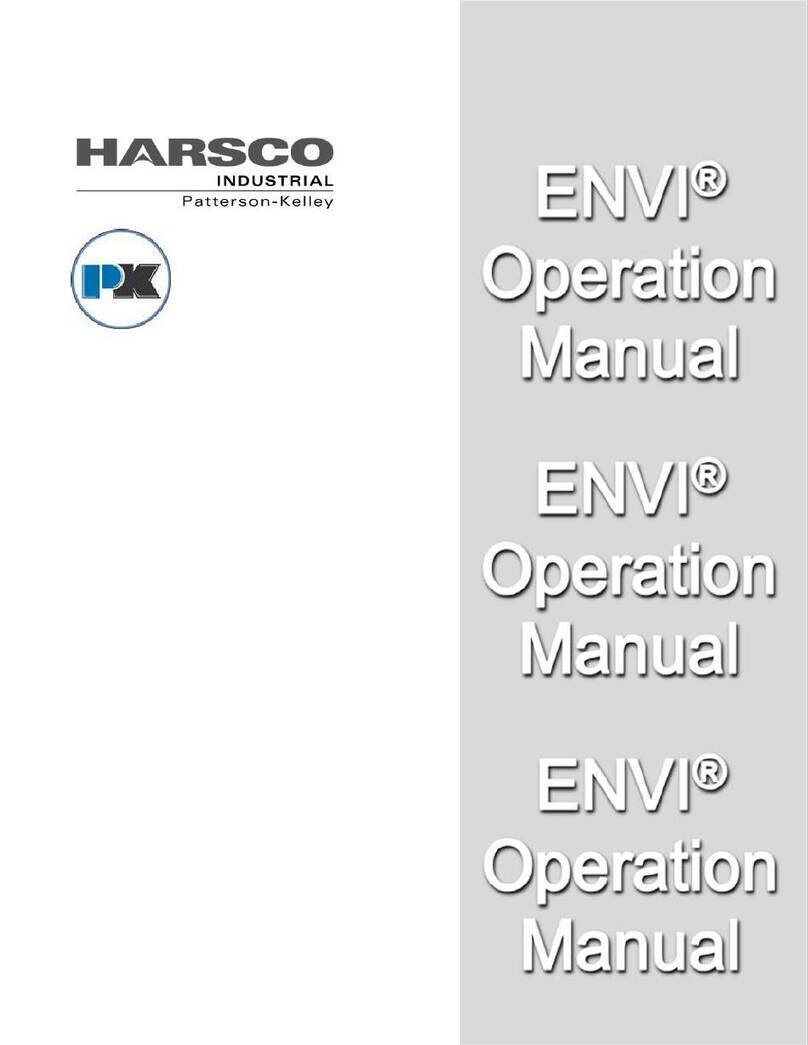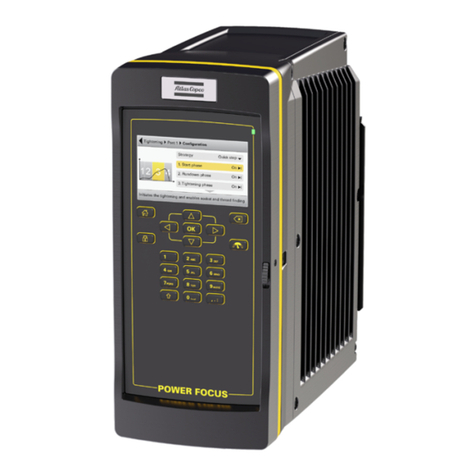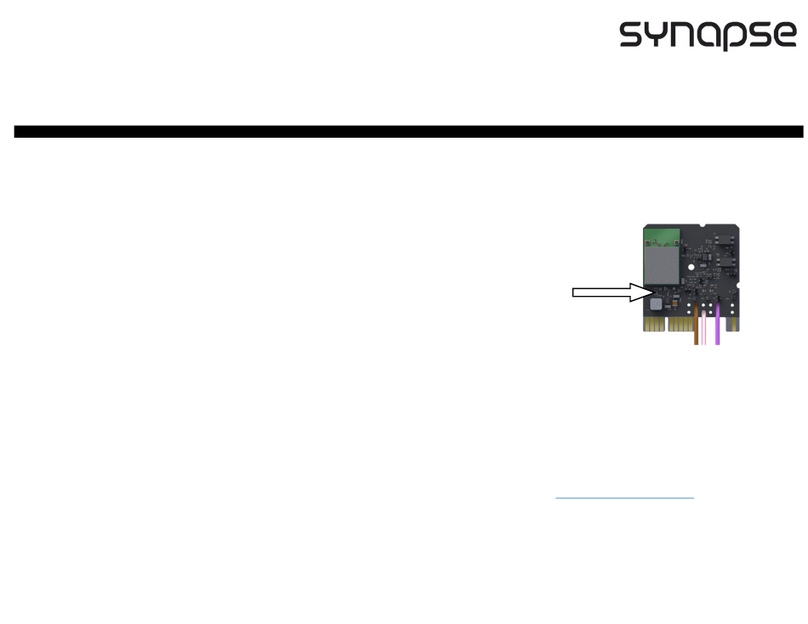TQ TQMxE40C1 User manual

User's Manual l TQMxE40C1.UM.0100 l © 2021, TQ-Systems GmbH Page i
TQMxE40C1
User's Manual
TQMxE40C1.UM.0100
13.12.2021


User's Manual l TQMxE40C1.UM.0100 l © 2021, TQ-Systems GmbH Page i
TABLE OF CONTENTS
1. ABOUT THIS MANUAL ........................................................................................................................................................................5
1.1 Copyright and License Expenses ....................................................................................................................................................5
1.2 Registered Trademarks ......................................................................................................................................................................5
1.3 Disclaimer...............................................................................................................................................................................................5
1.4 Imprint.....................................................................................................................................................................................................5
1.5 Service and Support............................................................................................................................................................................5
1.6 Tips on Safety........................................................................................................................................................................................6
1.7 Symbols and Typographic Conventions.......................................................................................................................................6
1.8 Handling and ESD Tips.......................................................................................................................................................................6
1.9 Naming of Signals................................................................................................................................................................................7
1.10 Further Applicable Documents / Presumed Knowledge.........................................................................................................7
2. INTRODUCTION ....................................................................................................................................................................................7
2.1 Overview.................................................................................................................................................................................................8
2.2 COM Express™ Specification Compliance ....................................................................................................................................9
2.3 Versions...................................................................................................................................................................................................9
2.4 Accessories.............................................................................................................................................................................................9
3. FUNCTION ........................................................................................................................................................................................... 10
3.1 Block Diagram.................................................................................................................................................................................... 10
3.2 Electrical Characteristics................................................................................................................................................................. 10
3.2.1 Supply Voltage .................................................................................................................................................................................. 10
3.2.2 Power Consumption........................................................................................................................................................................ 11
3.2.3 Real Time Clock Power Consumption ........................................................................................................................................ 12
3.3 Environmental Conditions............................................................................................................................................................. 12
3.4 System Components........................................................................................................................................................................ 13
3.4.1 Processor ............................................................................................................................................................................................. 13
3.4.2 Graphics............................................................................................................................................................................................... 13
3.4.3 Memory................................................................................................................................................................................................ 14
3.4.3.1 LPDDR4/4x SDRAM .......................................................................................................................................................................... 14
3.4.3.2 eMMC ................................................................................................................................................................................................... 14
3.4.3.3 SPI Boot Flash..................................................................................................................................................................................... 14
3.4.3.4 EEPROM ............................................................................................................................................................................................... 14
3.4.4 Real Time Clock ................................................................................................................................................................................. 14
3.4.5 Trusted Platform Module ............................................................................................................................................................... 14
3.4.6TQ flexible I/O configuration (TQ-flexiCFG).............................................................................................................................. 15
3.4.7 Ultra Deep Power State Green ECO-Off ..................................................................................................................................... 15
3.5 Interfaces ............................................................................................................................................................................................. 15
3.5.1 PCI Express.......................................................................................................................................................................................... 15
3.5.2 PCI Express for Graphics (PEG)...................................................................................................................................................... 15
3.5.3 Gigabit Ethernet................................................................................................................................................................................ 16
3.5.4 Serial ATA ............................................................................................................................................................................................ 16
3.5.5 Digital Display Interface.................................................................................................................................................................. 16
3.5.6 LVDS Interface.................................................................................................................................................................................... 16
3.5.7 USB Interfaces .................................................................................................................................................................................... 16
3.5.8 SD Card Interface .............................................................................................................................................................................. 17
3.5.9 General Purpose Input / Output................................................................................................................................................... 17
3.5.10 High Definition Audio Interface ................................................................................................................................................... 17
3.5.11 LPC Bus / eSPI..................................................................................................................................................................................... 17
3.5.12 I2C Bus................................................................................................................................................................................................... 17
3.5.13 SMBus ................................................................................................................................................................................................... 17
3.5.14 Serial Peripheral Interface .............................................................................................................................................................. 17
3.5.15 Serial Ports .......................................................................................................................................................................................... 18
3.5.16 CAN interface ..................................................................................................................................................................................... 18
3.5.17 Watchdog Timer................................................................................................................................................................................ 18
3.6 Connectors.......................................................................................................................................................................................... 19
3.6.1 COM Express™ Connector .............................................................................................................................................................. 19
3.6.2 Debug Header.................................................................................................................................................................................... 19
3.6.3 TQM Debug Card .............................................................................................................................................................................. 19
3.6.4 Debug Module LED .......................................................................................................................................................................... 19
3.7 COM Express™ Connector Pinout ................................................................................................................................................ 20
3.7.1 Signal Assignment Abbreviations ............................................................................................................................................... 20
3.7.2 COM Express™ Connector Pin Assignment............................................................................................................................... 21

User's Manual l TQMxE40C1.UM.0100 l © 2021, TQ-Systems GmbH Page ii
4. MECHANICS ........................................................................................................................................................................................ 29
4.1 TQMxE40C1 Dimensions ................................................................................................................................................................ 29
4.2 Heat Spreader .................................................................................................................................................................................... 30
4.3 Mechanical and Thermal Considerations.................................................................................................................................. 30
4.4 Protection against External Effects.............................................................................................................................................. 30
4.5 Label placement................................................................................................................................................................................ 31
5. SOFTWARE .......................................................................................................................................................................................... 32
5.1 System Resources ............................................................................................................................................................................. 32
5.1.1 I2C Bus Devices................................................................................................................................................................................... 32
5.1.2 SMBus Devices................................................................................................................................................................................... 32
5.1.3 Memory Mapping ............................................................................................................................................................................. 32
5.1.4 Interrupt Mapping............................................................................................................................................................................ 32
5.2 Operating Systems ........................................................................................................................................................................... 32
5.2.1 Supported Operating Systems ..................................................................................................................................................... 32
5.2.2 Driver Download............................................................................................................................................................................... 32
5.3 TQ-Systems Embedded Application Programming Interface (EAPI) ................................................................................ 32
5.4 Software Tools ................................................................................................................................................................................... 32
6. BIOS....................................................................................................................................................................................................... 33
6.1 Continue Boot Process.................................................................................................................................................................... 33
6.2 Boot Manager .................................................................................................................................................................................... 33
6.3 Device Manager ................................................................................................................................................................................ 34
6.3.1 Driver Health Manager.................................................................................................................................................................... 34
6.3.2 Network Device List ......................................................................................................................................................................... 34
6.4 Boot From File.................................................................................................................................................................................... 34
6.5 Administer Secure Boot .................................................................................................................................................................. 34
6.6 Setup Utility........................................................................................................................................................................................ 35
6.6.1 Main ...................................................................................................................................................................................................... 35
6.6.2 Advanced ............................................................................................................................................................................................ 35
6.6.2.1.1 Boot Configuration........................................................................................................................................................................... 36
6.6.2.1.2 USB Configuration............................................................................................................................................................................ 36
6.6.2.1.3 Chipset Configuration ..................................................................................................................................................................... 36
6.6.2.1.4 ACPI Table/Features Control ......................................................................................................................................................... 36
6.6.2.1.5 RC Advanced Menu.......................................................................................................................................................................... 36
6.6.2.1.6 ACPI Settings...................................................................................................................................................................................... 37
6.6.2.1.7 CPU Configuration............................................................................................................................................................................ 37
6.6.2.1.8 Power & Performance...................................................................................................................................................................... 38
6.6.2.1.9 Intel® Time Coordinated Computing.......................................................................................................................................... 40
6.6.2.1.10 Memory Configuration.................................................................................................................................................................... 41
6.6.2.1.11 System Agent (SA) Configuration................................................................................................................................................ 41
6.6.2.1.12 PCH-IO Configuration...................................................................................................................................................................... 43
6.6.2.1.13 PCH-FW Configuration.................................................................................................................................................................... 47
6.6.2.1.14 Thermal Configuration.................................................................................................................................................................... 48
6.6.2.1.15 Platform Settings .............................................................................................................................................................................. 48
6.6.2.1.16 SIO TQMx86 ........................................................................................................................................................................................ 49
6.6.2.1.17 Console Redirection......................................................................................................................................................................... 50
6.6.2.1.18 H2OUVE Configuration ................................................................................................................................................................... 50
6.6.2.1.19 SIO F81214E........................................................................................................................................................................................ 51
6.6.2.1.20 NVM Express Information............................................................................................................................................................... 51
6.6.3 Security ................................................................................................................................................................................................ 51
6.6.4 Power.................................................................................................................................................................................................... 51
6.6.5 Boot....................................................................................................................................................................................................... 52
6.6.6 Exit......................................................................................................................................................................................................... 53
6.7 BIOS Update ....................................................................................................................................................................................... 53
6.7.1 Step 1: Preparing USB Stick............................................................................................................................................................ 53
6.7.2 Step 2: Preparing Management Engine (ME) FW for update .............................................................................................. 53
6.7.3 Step 3a: Updating uEFI BIOS via EFI Shell.................................................................................................................................. 55
6.7.4 Step 3b: Updating uEFI BIOS via Windows Operating System ........................................................................................... 56
6.7.5 Step 4: BIOS update check on the TQMxE40C1 Module....................................................................................................... 56
7. SAFETY REQUIREMENTS AND PROTECTIVE REGULATIONS.................................................................................................. 58
7.1 EMC ....................................................................................................................................................................................................... 58
7.2 ESD ........................................................................................................................................................................................................ 58
7.3 Shock & Vibration ............................................................................................................................................................................. 58
7.4 Operational Safety and Personal Security................................................................................................................................. 58
7.5 Reliability and Service Life.............................................................................................................................................................. 58
8. ENVIRONMENT PROTECTION ........................................................................................................................................................ 59

User's Manual l TQMxE40C1.UM.0100 l © 2021, TQ-Systems GmbH Page iii
8.1 RoHS...................................................................................................................................................................................................... 59
8.2 WEEE®................................................................................................................................................................................................... 59
8.3 REACH®................................................................................................................................................................................................ 59
8.4 EuP......................................................................................................................................................................................................... 59
8.5 Battery .................................................................................................................................................................................................. 59
8.6 Packaging............................................................................................................................................................................................ 59
8.7 Other entries ...................................................................................................................................................................................... 59
9. APPENDIX............................................................................................................................................................................................ 60
9.1 Acronyms and Definitions.............................................................................................................................................................. 60
9.2 References........................................................................................................................................................................................... 62

User's Manual l TQMxE40C1.UM.0100 l © 2021, TQ-Systems GmbH Page iv
TABLE DIRECTORY
Table 1: Terms and Conventions .............................................................................................................................................................6
Table 2: TQMxE40C1 Power Consumption........................................................................................................................................ 11
Table 3: RTC Current Consumption...................................................................................................................................................... 12
Table 4: Intel® X6000E Series: Comparision of the SKUs................................................................................................................ 13
Table 5: Maximum Resolution Display Configuration.................................................................................................................... 14
Table 6: PCI Express port 0 – 7 configuration options.................................................................................................................... 15
Table 7: Serial Port COM Express™ Port Mapping............................................................................................................................ 18
Table 8: LED Boot Messages................................................................................................................................................................... 19
Table 9: Signal Assignment Abbreviations........................................................................................................................................ 20
Table 10: COM Express™ Connector Pin Assignment ....................................................................................................................... 21
Table 11: Labels on TQME40C1................................................................................................................................................................ 31
Table 12: I2C Address Mapping COM Express™ I2C Port ................................................................................................................... 32
Table 13: Acronyms..................................................................................................................................................................................... 60
Table 14: Further Applicable Documents and Links ......................................................................................................................... 62
ILLUSTRATION DIRECTORY
Illustration 1: TQMxE40C1 Block Diagram.................................................................................................................................................... 10
Illustration 2: TQM Debug Card....................................................................................................................................................................... 19
Illustration 3: Three-sided drawing of the TQMxE40C1 (dimensions in mm) ................................................................................... 29
Illustration 4: Bottom view drawing of the TQMxE40C1.......................................................................................................................... 29
Illustration 5: TQMxE40C1 Component Placement Top .......................................................................................................................... 30
Illustration 6: Label Placement ........................................................................................................................................................................ 31
Illustration 7: InsydeH2O BIOS Front Page................................................................................................................................................... 33
Illustration 8: RC Advanced Menu .................................................................................................................................................................. 54
Illustration 9: PCH-FW Configuration menu................................................................................................................................................ 54
Illustration 10: Firmware Update configuration menu............................................................................................................................... 54
Illustration 11: ME FW Image Re-Flash option............................................................................................................................................... 54
Illustration 12: EFI Shell......................................................................................................................................................................................... 55
Illustration 13: EFI Shell uEFI BIOS Update...................................................................................................................................................... 55
Illustration 14: Screen during BIOS Update.................................................................................................................................................... 55
Illustration 15: TQMxE40C1 Debug LED.......................................................................................................................................................... 56
Illustration 16: EFI BIOS Main Menu.................................................................................................................................................................. 57
REVISION HISTORY
Rev. Date Name Pos. Modification
0001 18.10.2021 FP Initial internal release
0100 13.12.2021 Kreuzer Initial public release

User's Manual l TQMxE40C1.UM.0100 l © 2021, TQ-Systems GmbH Page 5
1.
ABOUT THIS MANUAL
1.1
Copyright and License Expenses
Copyright protected © 2021 by TQ-Systems GmbH.
This User's Manual may not be copied, reproduced, translated, changed or distributed, completely or partially in electronic,
machine readable, or in any other form without the written consent of TQ-Systems GmbH.
The drivers and utilities for the components used as well as the BIOS are subject to copyrights of the respective manufacturers.
The licence conditions of the respective manufacturer are to be adhered to.
BIOS-licence expenses are paid by TQ-Systems GmbH and are included in the price.
Licence expenses for the operating system and applications are not taken into consideration and have to be calculated/declared
separately.
1.2
Registered Trademarks
TQ-Systems GmbH aims to adhere to copyrights of all graphics and texts used in all publications, and strives to use original
or license-free graphics and texts.
All brand names and trademarks mentioned in this User's Manual, including those protected by a third party, unless specified
otherwise in writing, are subjected to the specifications of the current copyright laws and the proprietary laws of the present
registered proprietor without any limitation. One should conclude that brand and trademarks are rightly protected by
a third party.
1.3
Disclaimer
TQ-Systems GmbH does not guarantee that the information in this User's Manual is up-to-date, correct, complete or of good
quality. Nor does TQ-Systems GmbH assume guarantee for further usage of the information. Liability claims against
TQ-Systems GmbH, referring to material or non-material related damages caused, due to usage or non-usage of the information
given in this User's Manual, or due to usage of erroneous or incomplete information, are exempted, as long as there is no proven
intentional or negligent fault of TQ-Systems GmbH.
TQ-Systems GmbH explicitly reserves the rights to change or add to the contents of this User's Manual or parts of it without
special notification.
1.4
Imprint
TQ-Systems GmbH
Gut Delling, Mühlstraße 2
D-82229 Seefeld
Tel: +49 8153 9308–0
Fax: +49 8153 9308–4223
E-Mail: Info@TQ-Group
Web: TQ-Group
1.5
Service and Support
Please visit our website www.tq-group.com for latest product documentation, drivers, utilities and technical support.
You can register on our website www.tq-group.com to have access to restricted information and automatic update services.
For direct technical support you can contact our FAE team by email: support@tq-group.com.
Our FAE team can also support you with additional information like 3D-STEP files and confidential information, which is not
provided on our public website.
For service/RMA, please contact our service team by email (service@tq-group.com) or your sales team at TQ-Systems GmbH.

User's Manual l TQMxE40C1.UM.0100 l © 2021, TQ-Systems GmbH Page 6
1.6
Tips on Safety
Improper or incorrect handling of the product can substantially reduce its life span.
1.7
Symbols and Typographic Conventions
Table 1: Terms and Conventions
Symbol Meaning
This symbol represents the handling of electrostatic-sensitive modules and / or components. These
components are often damaged / destroyed by the transmission of a voltage higher than about 50 V.
A human body usually only experiences electrostatic discharges above approximately 3,000 V.
This symbol indicates the possible use of voltages higher than 24 V.
Please note the relevant statutory regulations in this regard.
Non-compliance with these regulations can lead to serious damage to your health and also cause
damage / destruction of the component.
This symbol indicates a possible source of danger. Acting against the procedure described can lead to
possible damage to your health and / or cause damage / destruction of the material used.
This symbol represents important details or aspects for working with TQ-products.
Command
A font with fixed-width is used to denote commands, contents, file names, or menu items.
1.8
Handling and ESD Tips
General handling of your TQ-products
The TQ-product may only be used and serviced by certified personnel who have taken note of the
information, the safety regulations in this document and all related rules and regulations.
A general rule is: do not touch the TQ-product during operation. This is especially important when
switching on, changing jumper settings or connecting other devices without ensuring beforehand
that the power supply of the system has been switched off.
Violation of this guideline may result in damage / destruction of the TQMxE40C1 and be dangerous
to your health.
Improper handling of your TQ-product would render the guarantee invalid.
Proper ESD handling
The electronic components of your TQ-product are sensitive to electrostatic discharge (ESD).
Always wear antistatic clothing, use ESD-safe tools, packing materials etc., and operate your TQ-
product in an ESD-safe environment. Especially when you switch modules on, change jumper settings,
or connect other devices.

User's Manual l TQMxE40C1.UM.0100 l © 2021, TQ-Systems GmbH Page 7
1.9
Naming of Signals
A hash mark (#) at the end of the signal name indicates a low-active signal.
Example: RESET#
If a signal can switch between two functions and if this is noted in the name of the signal, the low-active function is marked
with a hash mark and shown at the end.
Example: C / D#
If a signal has multiple functions, the individual functions are separated by slashes when they are important for the wiring.
The identification of the individual functions follows the above conventions.
Example: WE2# / OE#
1.10
Further Applicable Documents / Presumed Knowledge
•
Specifications and manual of the modules used:
These documents describe the service, functionality and special characteristics of the module used.
•
Specifications of the components used:
The manufacturer's specifications of the components used, for example CompactFlash cards, are to be taken note of.
They contain, if applicable, additional information that has to be taken note of for safe and reliable operation.
These documents are stored at TQ-Systems GmbH.
•
Chip errata:
It is the user's responsibility to make sure all errata published by the manufacturer of each component are taken note of.
The manufacturer’s advice should be followed.
•
Software behaviour:
No warranty can be given, nor responsibility taken for any unexpected software behaviour due to deficient components.
•
General expertise:
Expertise in electrical engineering / computer engineering is required for the installation and the use of the device.
Implementation information for the carrier board design is provided in the COM Express™ Design Guide (2), maintained by the
PICMG®. This Carrier Design Guide includes a very good guideline to design a COM Express™ carrier board.
It includes detailed information with schematics and detailed layout guidelines.
Please refer to the official PICMG®documentation for additional information (1), (3).
2.
INTRODUCTION
The TQ module TQMxE40C1 is based on the latest generation of Intel®Atom®, Pentium®and Celeron®CPUs (code name
“Elkhart Lake”). It achieves a new level of computing performance, security and media processing performance in a very compact
form factor to empower real-time computing, industrial automation, digital surveillance, aviation, medical, retail and more.
The TQMxE40C1 corresponds to the internationally established PICMG®standard COM Express™ Compact (COM.0 R3.0) with
Type 6 pinout. 10 USB ports – including 2 USB 3.0 – and up to 8 PCIe lanes natively supported by the CPUs enable high
bandwidth communication with peripherals and additional interfaces on the carrier board. With the latest Intel®graphics
processor integrated, the TQMxE40C1 delivers 4K high resolution graphics output, immersive 3D processing and also greatly
increased video encode and playback performance.
Time coordinated computing capabilities enable time synchronized processes within IoT networks and industrial control
applications. On-board eMMC and the option for LVDS or native eDP enable flexibility and reduce overall BOM cost.
The integrated TQMx86 board controller enables high flexibility through “flexiCFG” and supports thermal management,
watchdog, 16550 compatible UARTs, I2C controllers, GPIO handling and “Green ECO-Off” with a minimum of standby power.
Combined with options like conformal coating and optimized cooling solutions the TQMxE40C1 also fits perfectly for mobile, low
power, ruggedized and battery driven applications in multiple vertical markets like industrial automation, medical devices,
transportation and others.

User's Manual l TQMxE40C1.UM.0100 l © 2021, TQ-Systems GmbH Page 8
2.1
Overview
The following key functions are implemented on the TQMxE40C1:
Processor:
•Intel®Atom®X6000E Series: „Elkhart Lake“ with different SKUs
•optimized for Embedded, Industrial Functional Safety or PC Client applications
Memory:
•LPDDR4: 4 Gbyte, 8 Gbyte, 16 Gbyte with up to 4267MT/s and optional In Band ECC (IBECC)
•eMMC 5.0 on-board-flash
•EEPROM: 32 kbit (24AA32AT)
Graphics:
•2 × Digital Display Interface (DDI) (DP 1.2/1.3/1.4, HDMI 1.4b/2.0b)
•1 × Embedded Digital Display Interface (eDDI) or dual LVDS interface (eDP 1.3 or dual LVDS)
Peripheral interfaces:
•1 × Gigabit Ethernet (Marvell 88E1512)
•2 × USB 3.1 Gen2 (up to 10 Gb/s) with USB 3.0 and 2.0 backward compatibility
•8 × USB 2.0
•2 × SATA Gen3 (up to 6 Gb/s)
•8 × PCIe Gen3 (up to 8 Gb/s) – 7 (×1), 4 (×2), or 1 (×4)
•1 × PCIe Gen3 PEG port (up to 8 Gb/s) – Lane 0, 1 , 2, 8 and 9 (optionally multiplexed with PCIe)
•1 × LPC or eSPI Interfac
•1 × Intel®HD audio (HDA)
•1 × I2C, (optional 3 x I2C) (master/slave capable)
•1 × SMBus
•1 × SPI (for external uEFI BIOS flash)
•2 × Serial port (Rx/Tx, legacy compatible), 4-wire (Rx/Tx/RTS/CTS) optionally through TQ-flexiCFG
•1 × CAN interface (multiplexed with serial port 1)
1 × SD card interface / optional 8 × GPIO through TQ-flexiCFG (multiplexed, configurable in BIOS menu)
Security components:
•TPM (SLB9670 TPM 2.0)
Others:
•TQMx86 board controller with Watchdog and TQ-flexiCFG
Power supply voltage:
•4.75 V to 20 V
•5 V Standby (optional)
•3 V Battery for RTC
Environment:
•Standard temperature: 0 °C to +60 °C
•Extended temperature: -40 °C to +85 °C
•Relative humidity (operation): 10 % to 90 % (non-condensing)
•Relative humidity (storage): 5 % to 95 % (non-condensing, with conformal coating)
Form factor / dimensions:
•COMExpress™ Compact, Type 6, 95 mm × 95 mm

User's Manual l TQMxE40C1.UM.0100 l © 2021, TQ-Systems GmbH Page 9
2.2
COM Express™ Specification Compliance
The TQMxE40C1 is compliant to the PICMG®COM Express™ Module Base Specification (COM.0 R3.0) Compact, Type 6,
with dimensions of 84 mm × 55 mm.
2.3
Versions
The TQMxE40C1 is available in several standard configurations.
Please refer to www.tq-group.com/ for a full list of standard versions.
Other configurations are available on request.
Standard configuration features are:
•eDP or dual LVDS
•CPU version
•Memory configuration
•TPM
•Temperature range
Optional hardware and software configuration features:
•Conformal coating can be offered as custom specific add-on
•Custom specific GPIO configuration through TQ-flexiCFG
•Custom specific BIOS configuration
2.4
Accessories
•
TQMxE40C1-HSP
Heat spreader for TQMxE40C1, according to COM Express™ specification.
•
Evaluation platform MB-COME6-3
Mainboard for COM Express™ Compact, Type 6, 170 × 170 mm2, with the following interfaces:
MB-COME6-3: 3 × DP, 1x LVDS , 1x eDP, 2 × Gbit Ethernet, 4 × USB 3.1 USB-A, 2 × COM, 1 x Audio, 2 x SATA, 1 x M.2
for I/O, 1x M.2 for SSD, 1x Mini PCIe, 1 x HDD / SSD Socket, PCIe PEG port, Fan, Debug
•
Debug module
POST debug card for TQMxE40C1, see3.6.3.

User's Manual l TQMxE40C1.UM.0100 l © 2021, TQ-Systems GmbH Page 10
3.
FUNCTION
3.1
Block Diagram
The following illustration shows the TQMxE40C1 block diagram.
Illustration 1: TQMxE40C1 Block Diagram
3.2
Electrical Characteristics
3.2.1 Supply Voltage
The TQMxE40C1 supports a wide-range voltage input from 4.75 V to 20.0 V DC.
The following supply voltages are specified at the COM Express™ connector:
•Wide input: 4.75 V to 20.0 V max input ripple: ±100 mV
•VCC_5V_SBY: 4.75 V to 5.25 V max input ripple: ±50 mV
•VCC_RTC: 2.0 V to 3.3 V max input ripple: ±20 mV
The input voltages shall rise from 10 % of nominal to 95 % of nominal within 0.1 ms to 20 ms (0.1 ms ≤ Rise Time ≤ 20 ms).
There must be a smooth and continuous ramp of each DC output voltage from 10 % to 90 % of its final set point within the
regulation band.
Note: Power source
For single supply operations, the 5 V Standby voltage is not required.
VCC_5V_SBY can be left unconnected.

User's Manual l TQMxE40C1.UM.0100 l © 2021, TQ-Systems GmbH Page 11
3.2.2 Power Consumption
The values given below show the voltage and power consumption of the TQMxE40C1.
The values were measured using the TQMxE40C1 and the MB-COME6-3 COM Express™ carrier board.
The measurement was done with two power supplies, one for the TQMxE40C1 and the other one for the MB-COME6-3 COM
Express™ carrier board.
The power consumption of each TQMxE40C1 was measured running Windows®10, 64-bit and and different LPDDR4x
configurations. All measurements were done at a temperature of +25 °C and an input voltage of +12 V.
The power consumption of the TQMxE40C1 depends on the application, the mode of operation and the operating system.
The power consumption was measured under the following test modes:
•
Green ECO-Off state:
The system is in Green ECO-Off state, all DC/DC power supplies on the TQMxE40C1 are switched off.
•
Suspend mode:
The system is in S5/S4 state, Ethernet port is disconnected.
•
Windows
®
10, 64-bit, idle state:
Desktop idle state, Ethernet port is disconnected.
•
Windows
®
10, 64-bit, maximum load:
These values show the maximum worst case power consumption, , achieved by using the Intel®stress test tool to apply
maximum load to the cores only, and cores plus graphics engine, Ethernet port is connected (1000 Mbps Speed)
•
Windows 10, 64 bit, Suspend Mode:
The system is in S5/S4 state, Ethernet port is disconnected.
The following table shows the TQMxE40C1 power consumption with different CPUs.
Table 2: TQMxE40C1 Power Consumption
CPU on
TQMxE40M
Mode
Standby 5 V
Input 5.0 V
Green ECO-Off state Suspend
Win10, 64 bit
idle
Win10, 64 bit
max. load
SKU6 Atom® x6413E 7.0 mW 1.04 W 5.6 W 12.4 W
SKU7 Atom® x6425E 7.0 mW 1.04 W 5.9 W 15.7 W
SKU8 Atom® x6212RE 7.0 mW 1.04 W 5.0 W 9.3 W
SKU9 Atom® x6425RE 7.0 mW 1.04 W 5.5 W 12.0 W
SKU10 Atom® x6425RE 7.0 mW 1.04 W 5.9 W 15.5 W
Note: Power requirement
The power supplies on the carrier board for the TQMxE40C1 have to be designed with enough
reserve. The carrier board should be able to provide at least twice the maximum TQMxE40C1 workload
power. The TQMxE40C1 supports several low-power states. The carrier board power supply has to be
stable, even with no load.

User's Manual l TQMxE40C1.UM.0100 l © 2021, TQ-Systems GmbH Page 12
3.2.3 Real Time Clock Power Consumption
The RTC (VCC_RTC) current consumption is shown below.
The values were measured at +25 °C under battery operating conditions.
Table 3: RTC Current Consumption
Mode Voltage Current
Intel®X6000E Series “Elkhart Lake” 3.0 V 3 µA
The current consumption of the RTC in the Intel®X6000E Series “Elkhart Lake” is specified in the Product Family Datasheet (EDS)
with quite high maximum current, but the values measured on several modules were lower than 3µA.
3.3
Environmental Conditions
•Operating temperature “Standard”: 0 °C to +60 °C
•Operating temperature “Extended”: –40 °C to +85 °C
•Storage temperature: –40 °C to +85 °C
•Relative humidity (operating / storage): 10 % to 90 % (non-condensing)
Attention: Maximum operating temperature
Do not operate the TQMxE40C1 without properly attached heat spreader or without heat sink.
The heat spreader is not a sufficient heat sink.

User's Manual l TQMxE40C1.UM.0100 l © 2021, TQ-Systems GmbH Page 13
3.4
System Components
3.4.1 Processor
The TQMxE40C1 supports Intel®X6000E Series.
The following list illustrates some key features of these CPUs:
•Quad and dual CPU cores with up to 3GHz
•Intel®64 Architecture
•Intel®Virtualization Technology (VT-x)
•In-Band ECC support
•Intel®Streaming SIMD Extensions 4.2 (Intel®SSE4.2)
•Intel®Enhanced Intel®SpeedStep®technology
•Intel®UHD Graphics
•High-bandwidth Digital Content Protection (HDCP) 2.3
•Triple independent displays
Table 4: Intel® X6000E Series: Comparision of the SKUs
Mode Atom®
x6211E
Atom®
x6413E
Atom®
x6425E
Atom®
x6212RE
Atom®
x6414RE
Atom®
x6425RE
Atom®
x6200FE
Atom®
x6427FE
Use
Condition Embedded Embedded Embedded Industrial Industrial Industrial Industrial
(FuSA)
Industrial
(FuSA)
CPU Cores 2 4 4 2 4 4 2 4
CPU
frequency 1.3 GHz 1.5 GHz 2 GHz 1.2 GHz 1.5 GHz 1.9 GHz 1.0 GHz 1.9 GHz
Burst
frequency 3 GHz 3 GHz 3 GHz -- -- -- -- --
UHD
Graphics
(Execution
Units)
16 EUs 16 EUs 32 EUs 16 EUs 16 EUs 32 EUs None 32 EUs
Temperature
Tjunction
-40 °C to
+105 °C
-40 °C to
+105 °C
-40 °C to
+105 °C
–40 °C to
+110 °C
–40 °C to
+110 °C
–40 °C to
+110 °C
–40 °C to
+110 °C
–40 °C to
+110 °C
Memory
Speed 3200 MT/s 3200 MT/s 3733 MT/s 3200 MT/s 3200 MT/s 4267 MT/s 2400 MT/s 4267 MT/s
Functional
Safety No No No No No No Yes Yes
Thermal
Design
Power (TDP)
6 W 9 W 12 W 6 W 9 W 12 W 4.5 W 12 W
3.4.2 Graphics
The Intel® X6000E Series CPUs includes an integrated Intel®UHD (Gen 11) graphics accelerator. It provides excellent 2D/3D
graphics performance with triple simultaneous display support.
The following list shows some key features of the Intel®X6000E Series CPUs:
•Graphics Technology (Gen 11 LP) with up to 32 Execution Units
•Hardware accelerated video decoding/encoding for H.264, MPEG2, VC-1, H.265/HEVC, VP9, VP8, JPEG/MJPEG
•DirectX 12 support
•OpenGL 4.5, OpenCL 1.2 support
The TQMxE40C1 supports two external Digital Display Interfaces (DDI1 and DDI2) and one internal display, either eDP or dual
channel LVDS interface at the COM Express™ connector, depending on module and carrier configuration.

User's Manual l TQMxE40C1.UM.0100 l © 2021, TQ-Systems GmbH Page 14
Table 5: Maximum Resolution Display Configuration
Display Maximum Display Resolution
LVDS 1920 × 1200 at 60 Hz (dual channel)
eDP 1.3 4096 × 2160 at 60 Hz
DP 1.4a 4096 × 2160 at 60 Hz
HDMI 2.0b 4096 × 2160 at 60 Hz
3.4.3 Memory
3.4.3.1 LPDDR4/4x SDRAM
The TQMxE40C1 supports a memory-down 4x32 bit LPDDR4/4x configuration running at up to 4267 MT/s and optional In Band
ECC (IBECC). The maximum memory size is 16 Gbyte. The available memory configuration can be either 4 Gbyte or 8 Gbyte, or 16
Gbyte.
3.4.3.2 eMMC
The TQMxE40C1 supports up to 512 Gbyte on-board eMMC 5.1 flash. The eMMC interface is not activated in BIOS default
settings.
Attention: eMMC OS installation
The on-board eMMC Flash requires pre-configuration via EFI Shell before OS installation
(e.g. diskpart utility)
3.4.3.3 SPI Boot Flash
The TQMxE40C1 provides a 256 Mbit SPI boot flash. It includes the uEFI BIOS and the Intel®Converged Security Engine (CSE)
which is comparable to Trusted Execution Engine (TXE).
An external SPI boot flash on the carrier can be used instead of the on-board SPI boot flash. The uEFI BIOS supports the following
3.3 V SPI flash devices on the carrier board:
•Macronix MX25L25645GMI-08G
3.4.3.4 EEPROM
The TQMxE40C1 supports a COM Express™ Module EEPROM. The 32 kbit EEPROM (24AA32AT) is connected to the general
purpose I2C interface (COM Express™ pin names I2C_DAT and I2C_CK).
3.4.4 Real Time Clock
The TQMxE40C1 includes a standard RTC (Motorola MS146818B) integrated in the Intel® X6000E Series CPU.
3.4.5 Trusted Platform Module
The TQMxE40C1 supports the Trusted Platform Module (TPM) 2.0 (Infineon SLB9670 controller).
Intel®X6000E Series CPU supports also a Firmware Trusted Platform Module (FTPM); this is a Trusted Platform Module 2.0
implementation in firmware. This feature can be configured in the BIOS.

User's Manual l TQMxE40C1.UM.0100 l © 2021, TQ-Systems GmbH Page 15
3.4.6 TQ flexible I/O configuration (TQ-flexiCFG)
The TQ-Systems COM Express™ module includes a flexible I/O configuration feature, the TQ-flexiCFG.
Using the TQ-flexiCFG feature several COM Express™ I/O interfaces and functions can be configured via a programmable FPGA.
This feature enables the user to integrate special embedded features and configuration options in the TQMxE40C1 to reduce the
carrier board design effort. Here are some examples of the flexible I/O configuration:
•GPIO interrupt configuration
•Interrupt configuration via LPC Serial IRQ
•Serial Port handshake signals via GPIOs
•Integrate additional I/O functions, e.g. additional Serial, CAN, I2C, PWM controller or
special power management configurations
Please contact support@tq-group.com for further information about the TQ-flexiCFG.
3.4.7 Ultra Deep Power State Green ECO-Off
The TQMxE40C1 supports the ultra-deep power state Green ECO-Off.
In this configuration all DC/DC power supplies on the TQMxE40C1 are switched off.
This results in lowest power consumption. The Green ECO-Off mode can be configured in the uEFI BIOS setup.
To wake up the system from the Green ECO-Off mode the power button signal has to be pulled low for at least 100 ms.
3.5
Interfaces
3.5.1 PCI Express
The TQMxE40C1 with Intel®X6000E Series CPU supports a very flexible PCI Express configuration with up eight PCI Express Gen3
ports.
With a customized BIOS the PCI Express lane configuration can be set as follows:
Table 6: PCI Express port 0 – 7 configuration options
COM Express™ Port 0 – 3 Configuration
(4) ×1 ports Standard BIOS
(1) ×2 and (2) ×1 ports Configuration via custom BIOS
(2) ×2 ports Configuration via custom BIOS
(1) ×4 port Configuration via custom BIOS
COM Express™ Port 4 – 7 Configuration
(2) ×1 ports Configuration via custom BIOS
(2) ×2 ports Standard BIOS
3.5.2 PCI Express for Graphics (PEG)
At the COM Express™ connector the TQMxE40C1 supports two x2 Gen3 PCI Express Graphics ports with 8 Gb/s speed.
The PCI Express PEG lanes 2 – 7 and 10 – 15 are not used. The PEG Interface is multiplexed with the PCI Express, therefore it
depends on the configuration if the PEG Port is available.
The PCI Express Graphic port can be used for PCI Express graphics devices or high speed non-graphic PCI Express devices
(e.g. quad Gigabit Ethernet or 10 Gigabit Ethernet controller).
Attention: PCI Express Gen 4 carrier design
The COM Express™ specification Revision 3.0 only supports the PCI Express Gen3 (8 Gb/s) data rate.
If the COM Express™ carrier is not designed for the PCI Express Gen 4 (16 Gb/s) operation, the PCI
Express port should be configured to operate in Gen3 (8 Gb/s) mode.

User's Manual l TQMxE40C1.UM.0100 l © 2021, TQ-Systems GmbH Page 16
3.5.3 Gigabit Ethernet
The TQMxE40C1 provides one Marvell 88E1512 Ethernet controller with 10/100/1000 Mbps speed.
The Ethernet LED functionality defined in the COM Express™ specification is currently not supported by the TQMxE40C1 module.
Intel is working on this issue.
3.5.4 Serial ATA
The TQMxE40C1 supports two SATA Gen3.0 (6 Gbit/s) interfaces.
The integrated SATA host controller supports AHCI mode, the SATA controller no longer supports legacy IDE mode using I/O
space.
3.5.5 Digital Display Interface
The TQMxE40C1 supports three Digital Display Interfaces at the COM Express™ connector.
The DDI0 port supports LVDS (via an eDP to LVDS bridge) or eDP as an assembly option.
The DDI1 port supports DisplayPort or HDMI/DVI.
The DDI2 port supports DisplayPort or HDMI/DVI.
The TQMxE40C1 supports the following maximum display resolutions:
•DisplayPort 1.4 up to 4096 x 2160 @ 60 Hz
•HDMI 2.0b up to 4096 × 2160 @ 60 Hz
•DVI up to 4096 × 2160 @ 24 Hz (HDMI without Audio)
•eDP up to 4 lanes eDP 1.4a up to 4096 × 2160 @ 60 Hz
•LVDS up to 1920 × 1200 @ 60 Hz in dual channel LVDS mode
For an HDMI/DVI output, a level converter must be used on the carrier board.
3.5.6 LVDS Interface
The TQMxE40C1 supports an LVDS interface at the COM Express™ connector.
The LVDS interface is provided through an on-board eDP to LVDS Bridge.
The eDP to LVDS Bridge supports single or dual bus LVDS signalling with colour depths of 18 bits per pixel or 24 bits per pixel
up to 112 MHz and a resolution up to 1920 × 1200 @ 60 Hz in dual channel LVDS mode.
The LVDS data packing can be configured either in VESA or JEIDA format.
To support panels without EDID ROM, the eDP-to-LVDS bridge can emulate EDID ROM behaviour avoiding specific changes in
system video BIOS.
Please contact support@tq-group.com for further information about the LVDS configuration.
3.5.7 USB Interfaces
The TQMxE40C1 supports eight USB 2.0 and two USB 3.2 Gen2 ports with data rate up to 10 Gb/s at the COM Express™
connector. The USB SuperSpeed ports are configured to USB 3.2 Gen1 (5 Gb/s) per default.
Care must be taken in the COM Express™ carrier design, the carrier must support the USB 3.2 Gen2 (10 Gb/s) high speed
standard if this mode is needed.
Attention: USB 3.1 Gen2 (10 Gb/s) carrier design
The COM Express™ specification Revision 3.0 only supports the USB 3.2 Gen1 (5 Gb/s) data rate.
If the COM Express™ carrier is not designed for the USB 3.2 Gen2 (10 Gb/s) operation, the USB 3.2
ports should be configured to operate in Gen1 mode.
Note: USB Port Mapping
The USB 2.0 port 0 must be paired with USB 3.1 SuperSpeedPlus port 0.
The USB 2.0 port 1 must be paired with USB 3.1 SuperSpeedPlus port 1.

User's Manual l TQMxE40C1.UM.0100 l © 2021, TQ-Systems GmbH Page 17
To support more than two USB 3.1 ports the PCIe ports 0 and 1 can be configured to USB 3.2.
Please contact support@tq-group.com for further information about USB 3.1 high-speed Design Guidelines and more ports.
3.5.8 SD Card Interface
The TQMxE40C1 provides an SD card interface for 4-bit SD/MMC cards at the COM Express™ connector.
The SD card signals are shared with the GPIO signals and can be configured via the BIOS.
The default configuration at the COM Express™ connector is with GPIO signals.
The SD Card interface is not activated in BIOS default settings.
3.5.9 General Purpose Input / Output
The TQMxE40C1 provides eight GPIO signals at the COM Express™ connector.
The GPIO signals are shared with the SD card signals and can be configured via an uEFI BIOS setting.
The default configuration at the COM Express™ connector is GPIO.
The GPIO signals are integrated in the TQ-flexiCFG block and can be flexible configured.
The signals can also be used for special functions (see 3.4.6).
3.5.10 High Definition Audio Interface
The TQMxE40C1 provides a High Definition Audio (HDA) interface, which supports two audio codecs at the COM Express™
connector. The HDA_SDIN2 signal at the COM Express™ is not connected. The Audio Codec is assembled on the carrier board.
3.5.11 LPC Bus / eSPI
The TQMxE40C1 supports a Low Pin Count (LPC) legacy bus and the Enhanced Serial Peripheral eSPI bus on the same COM
Express™ connector pins.
The LPC bus is a 3.3 V bus and eSPI is a 1.8 V bus. There is the possibility of a mismatch an eSPI only module mated with a LPC
only carrier, or an LPC only module on an eSPI carrier.
The TQMxE40C1 includes a multiplexer to switch between the LPC bus and the eSPI bus on the COM Express™ connector pins.
With the ESPI_EN# signal the carrier indicate the operating mode of the LPC / eSPI bus. If left unconnected on the carrier, LPC
mode (default) is selected. If pulled to GND on the carrier, eSPI mode is selected.
Note: LPC / eSPI bus
Starting with the Intel® X6000E Series Intel® Atom® series, the legacy Low Pin Count (LPC) interface has
been removed from the processor silicon. The TQMxE40C1 module includes an eSPI to LPC bridge to
support the LPC legacy bus.
For new carrier designs the Enhanced Serial Peripheral eSPI bus should be selected.
3.5.12 I2C Bus
The TQMxE40C1 supports a general purpose I2C port via a dedicated LPC to I2C controller integrated in the TQ-flexiCFG block.
The I2C host controller supports a transfer rate of up to 400 kHz and can be configured independently.
3.5.13 SMBus
The TQMxE40C1 provides a System Management Bus (SMBus).
3.5.14 Serial Peripheral Interface
The TQMxE40C1 provides a Serial Peripheral Interface (SPI). The SPI interface can only be used for SPI boot Flash devices.

User's Manual l TQMxE40C1.UM.0100 l © 2021, TQ-Systems GmbH Page 18
3.5.15 Serial Ports
The TQMxE40C1 offers a dual Universal Asynchronous Receiver and Transmitter (UART) controller. The register set is based on
the industry standard 16550 UART. The UART operates with standard serial port drivers without requiring a custom driver to be
installed. The 16 byte transmit and receive FIFOs reduce CPU overhead and minimize the risk of buffer overflow and data loss.
With the TQ-flexiCFG feature the serial ports can be configured to route the handshake signals to free pins at the COM Express™
connector.
Table 7: Serial Port COM Express™ Port Mapping
COM Express™ Signal COM Express™ Pin TQMxE40C1 Remark
SER0_TX A98 SER0_TX 3.3 V output (without protection)
SER0_RX A99 SER0_RX 3.3 V input (without protection)
SER1_TX A101 SER1_TX 3.3 V output (without protection)
SER1_RX A102 SER1_RX 3.3 V input (without protection)
SER0_RTS# B98 SER0_RTS# 3.3 V output
SER0_CTS# B99 SER0_CTS# 3.3 V input
SER1_RTS# D24 SER1_RTS# 3.3 V output
SER1_CTS# D25 SER1_CTS# 3.3 V input
Note: Protection circuits
In COM Express™ specification Revision 3.0 the signals A98, A99, A101 and A102 have been reclaimed
from the VCC_12V pool. Therefore protection on the carrier board is necessary to avoid damage to
those when accidentally exposed to 12 V. The implementation of this circuitry causes lower transfer
rates on the two serial ports.
On the TQMxE40C1 the protection circuit is removed by default and the serial ports provide transfer
rates of up to 115 kbaud. Therefore the TQMxE40C1 can only be used in a COM Express™ COM.0 2.0
and 3.0 Type 6 pin-out carrier board.
3.5.16 CAN interface
The TQMxE40C1 provides a CAN interface. The signals for the CAN interface are shared with the serial port (SER1) signals and can
be configured via a register setting.
If a CAN interface is required appropriate transceivers have to be realized on the carrier.
3.5.17 Watchdog Timer
The TQMxE40C1 supports an independently programmable two-stage Watchdog timer integrated in the TQ-flexiCFG block.
There are four operation modes available for the Watchdog timer:
•Dual-stage mode
•Interrupt mode
•Reset mode
•Timer mode
The Watchdog timer timeout ranges from 125 ms to 1 h.
The COM Express™ Specification does not support external hardware triggering of the Watchdog.
An external Watchdog Trigger can be configured to GPIO pins at the COM Express™ connector with the TQ-flexiCFG feature.
Table of contents
Popular Controllers manuals by other brands
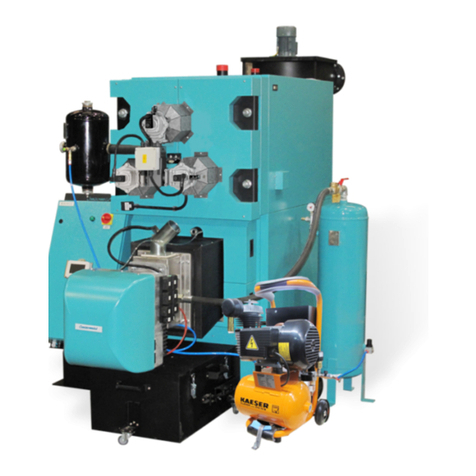
Centrometal
Centrometal EKO-CKS P UNIT controller Technical instructions

Yamatake
Yamatake SDC10 Series manual
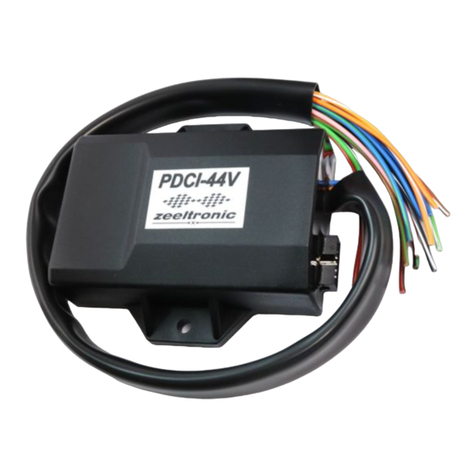
zeeltronic
zeeltronic PDCI-44V user manual
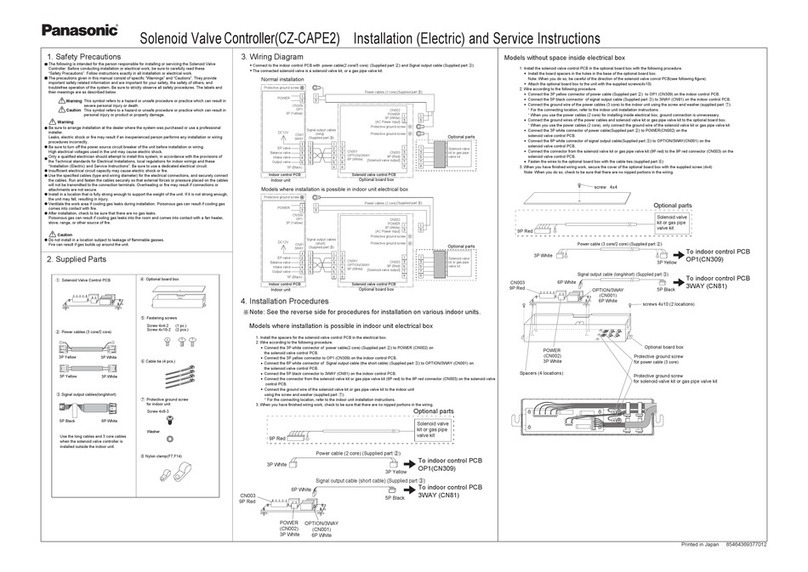
Panasonic
Panasonic CZ-CAPE2 Installation and service instructions
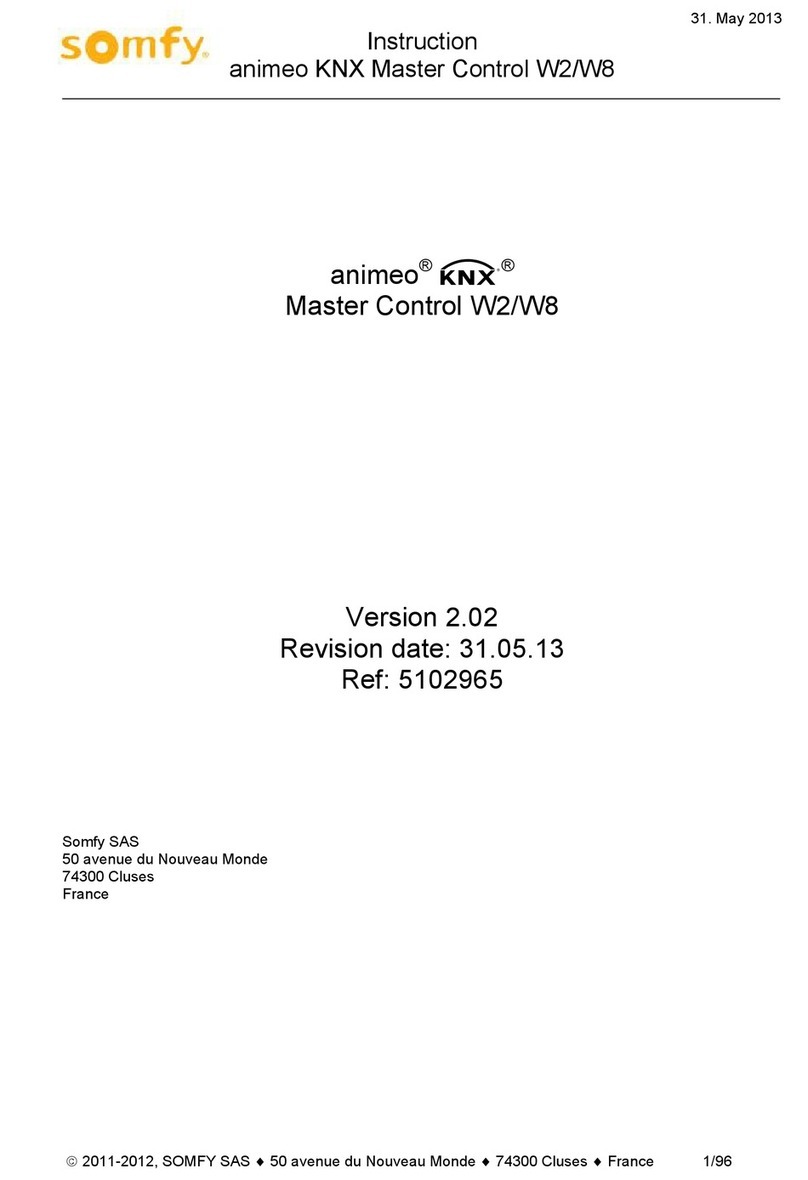
SOMFY
SOMFY animeo KNX Master Control W2 Instruction

Gardner Denver
Gardner Denver GD Connect 12 manual
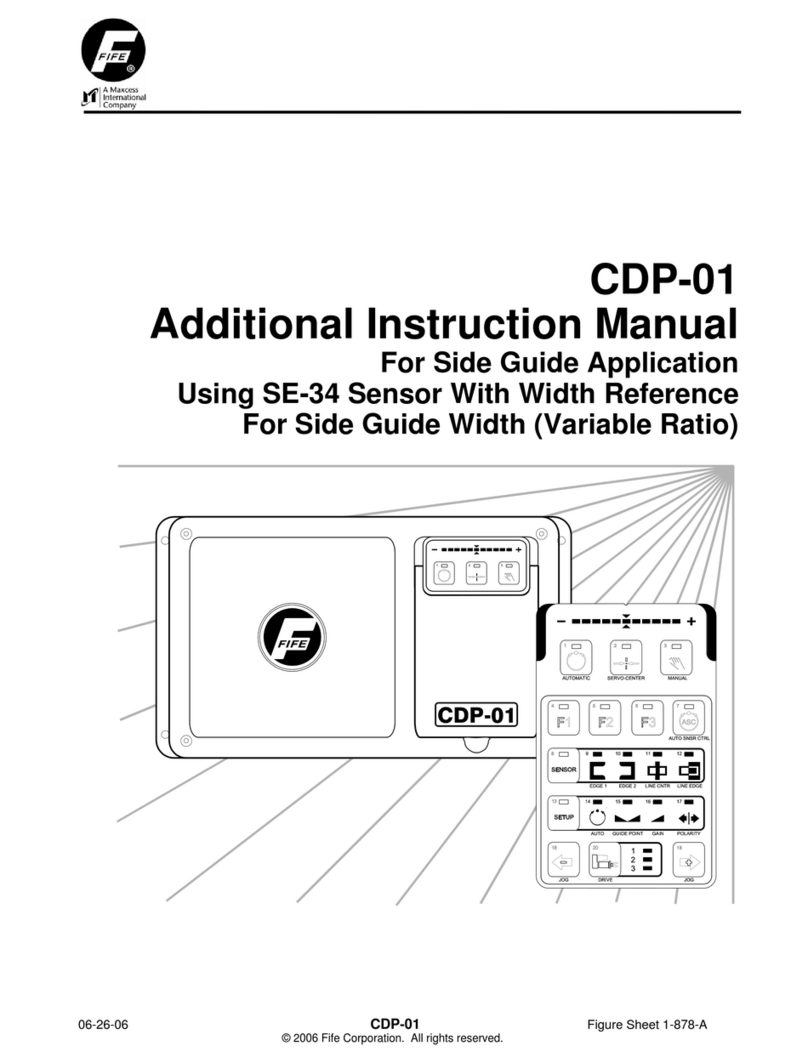
Fife
Fife CDP-01 Additional instruction manual

Marvair
Marvair CoolLinks NextGen Installation & operation manual
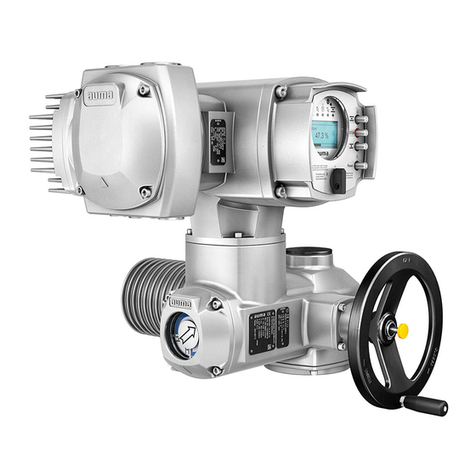
AUMA
AUMA SA Series Operation instructions

Mitsubishi
Mitsubishi MELSERVO MR-J2S-A-PY091 Series manual

LOVATO ELECTRIC
LOVATO ELECTRIC ATL610 instruction manual
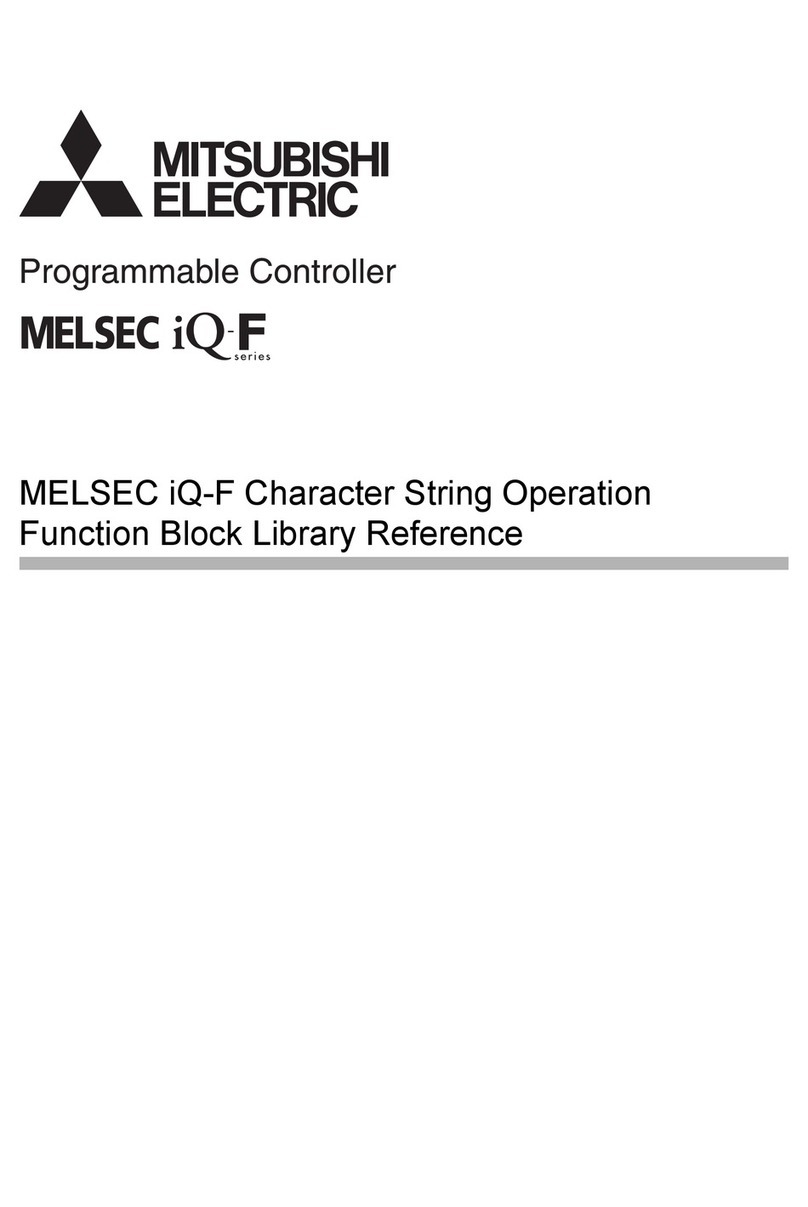
Mitsubishi Electric
Mitsubishi Electric MELSEC iQ-F Series manual

